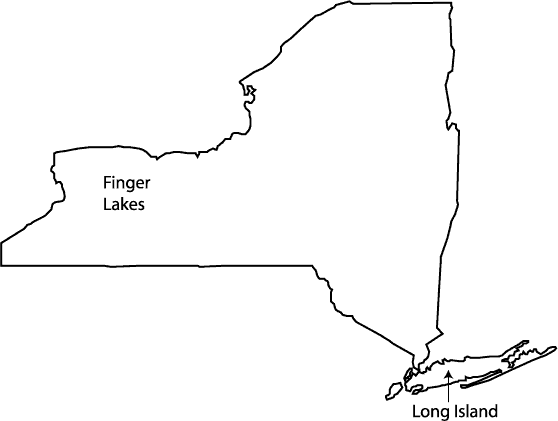
New York
 Overview
Overview
Second only to California in wine production, New York has been producing wines since the earliest days of the US. Few US wine lovers think of New York in the same regard as they would California. This is changing as small wineries have begun planting Vinifera (European grape varieties such as Cabernet and Chardonnay) in place of the more traditional Hybrids and native American grapes. You are now more likely to be offered a New York Riesling than the once ubiquitous White Concord. The Concord, a native American grape, is now relegated to making juice, which it does best. Sparkling wines continue to be produced in New York, in response to the cool climate (crisp tart grapes are required for sparkling wine). New York has a ways to go before it can lose the stigma it gained from centuries of indifferent wines, but it is moving in the right direction.
Subregions
Finger Lakes - The main wine producing area in New York state. The region, which is about 300 miles northwest of New York City is dotted with lakes. These help to keep the ground from freezing in winter, and so help improve the conditions for vines. While wine has been made here since the early 19th century, the results had always been spotty. Once planted almost exclusively to French Hybrids (crosses between native American grapes and the European wine grapes) the Finger Lakes are now as likely to produce the better known white wines, Chardonnay and Riesling.
Long Island - The maritime climate of this region has led many to compare it to Bordeaux. While the wines have been steadily improving over the years, no wine from Long Island has gained a world wide reputation. Cabernet Sauvignon and Merlot are the most common red grapes. Chardonnay is the main white grape.
Copyright WineEducation.com
Do not reprint without permission